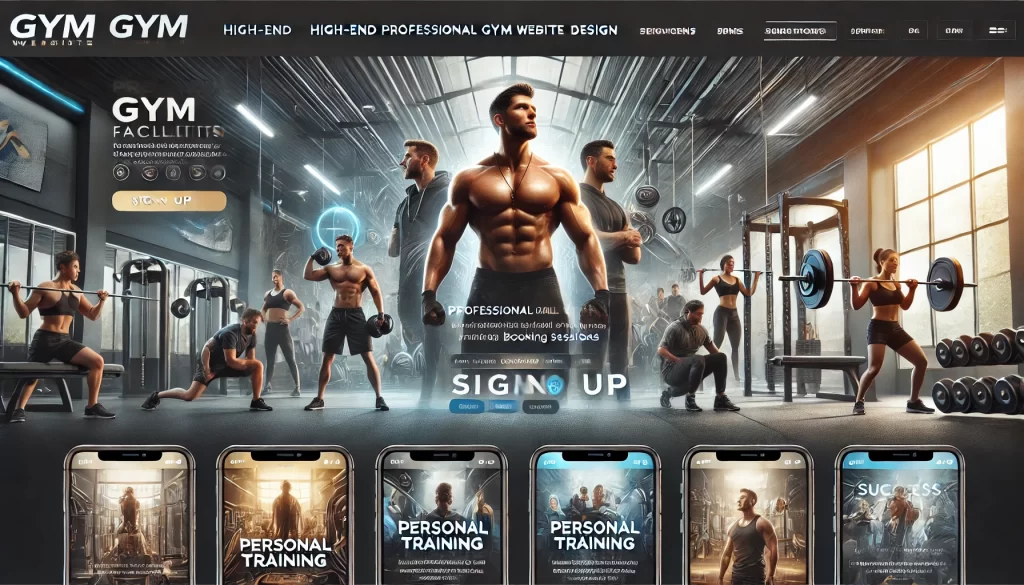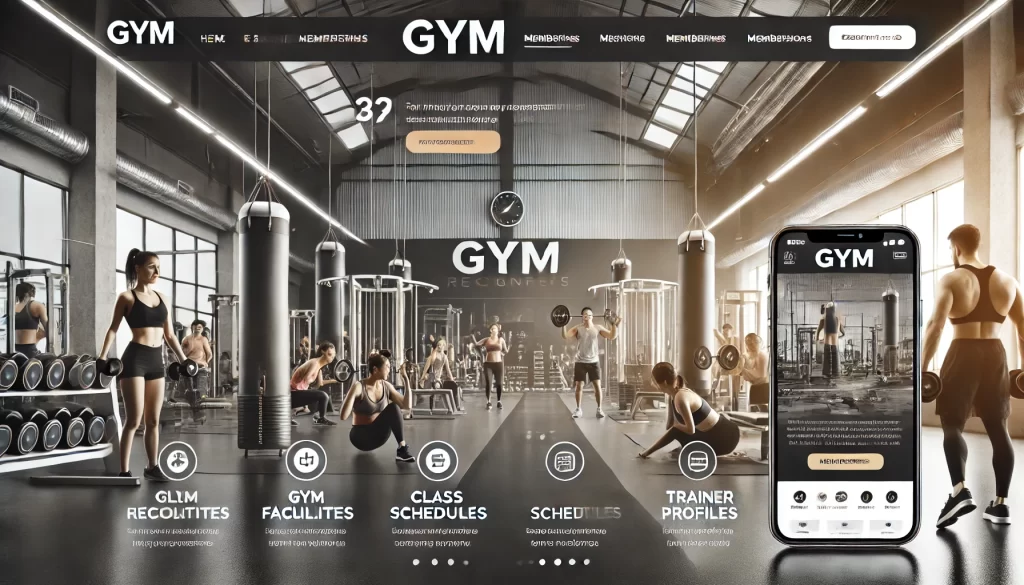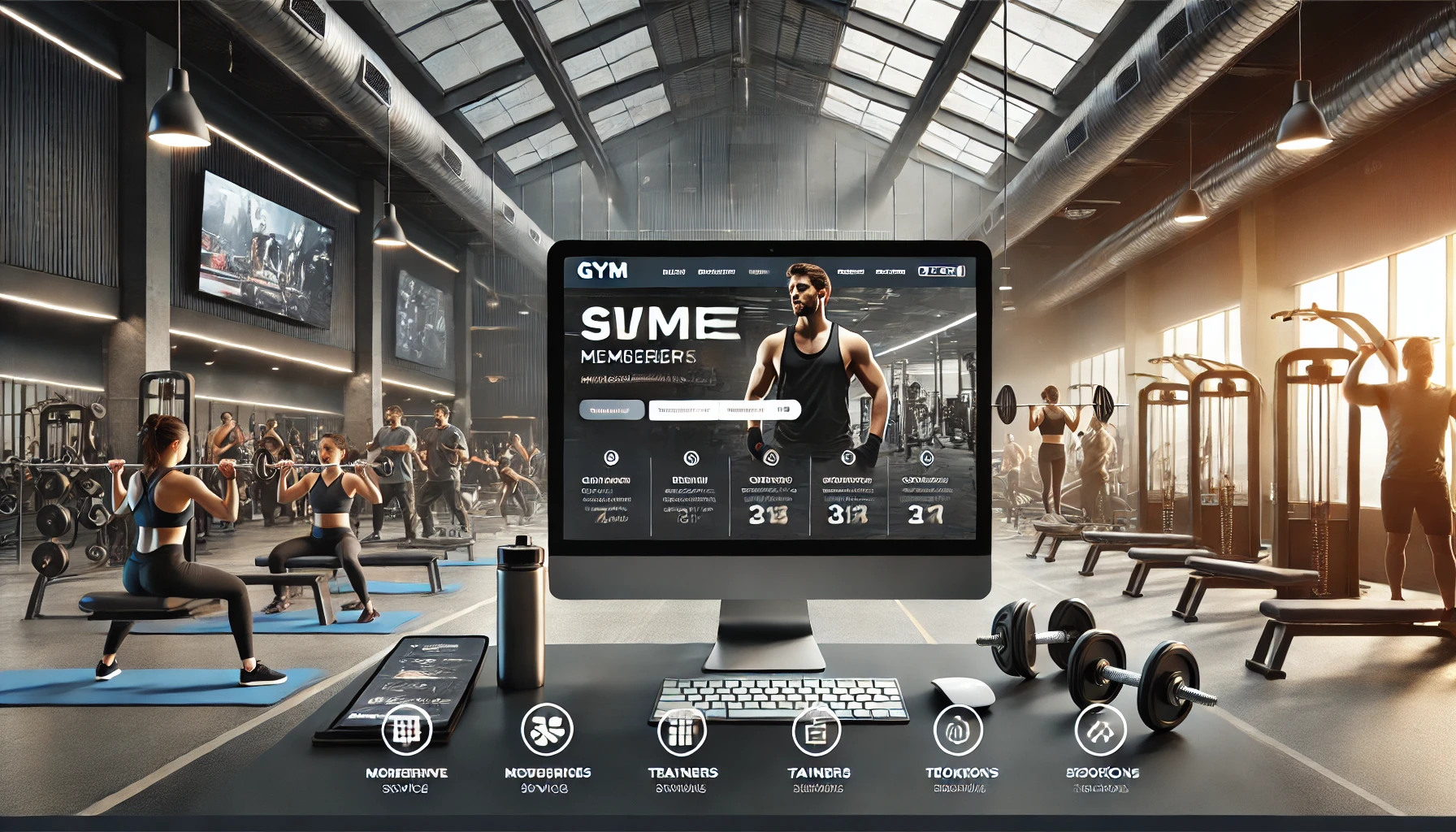Introduction
In the digital era, a gym’s website serves as its online storefront. It’s not just about having an online presence, it’s about creating a memorable and functional experience for potential clients and current members. Whether you’re starting a new fitness business or looking to redesign an existing gym website, investing in a high-quality gym website design is essential for success. A well-designed website can significantly increase your ability to attract new clients, retain current members, and establish a strong brand presence in the competitive fitness industry.
A gym’s website is much more than a tool for information; it’s a critical part of your marketing strategy, and it can directly impact membership sales, class bookings, and even member satisfaction. So, how do you ensure your gym’s website stands out? In this article, we’ll explore the key components of a great gym website design, the design process, and the importance of professional design.

Related Posts
Features of a Great Gym Website Design
Creating a gym website that appeals to potential members requires more than just an appealing aesthetic, it involves several functional elements working together to offer a seamless and engaging experience. Let’s dive into the critical features that make a gym website successful.
Mobile-Friendly Design – Making Sure It Works Across Devices
Today, more people are browsing websites on mobile devices than ever before. A responsive design is essential for gym websites to ensure that they look and function seamlessly on smartphones, tablets, and desktops. Mobile responsiveness is not just a bonus feature; it’s a requirement for any modern website.
With the majority of your visitors likely to access your site on their phones, it’s essential that the site adjusts its layout and content to fit different screen sizes. This not only improves the user experience but also helps with SEO, as search engines like Google prioritize mobile-friendly websites. When designing your gym website, make sure that all key elements, such as class schedules, membership sign-ups, and contact forms are easy to access and use on smaller screens.
User Experience (UX) – Simple Navigation and Clear Calls to Action (CTAs)
A website’s design should prioritize ease of use. Visitors should never feel lost or confused about where to go next. The goal of good UX is to guide users smoothly through the site, helping them quickly find the information they need or take action (such as signing up for a membership or booking a class).
To achieve this, gym websites should feature simple navigation with clearly labeled menus, quick access to important pages (like membership details and class schedules), and clear calls to action (CTAs). CTAs are buttons or links that direct users toward a specific action, such as “Join Now,” “Schedule a Tour,” or “Sign Up for a Class.” These buttons should be prominent and placed strategically to encourage conversions.
A good user experience keeps visitors engaged and reduces bounce rates. The easier it is for users to find information, make bookings, or contact the gym, the more likely they are to follow through with joining or scheduling their first class.
Integration with Fitness Software – Booking Systems, Memberships, etc.
For a gym website to be functional and serve its purpose effectively, it needs to integrate with the right fitness software. This might include booking systems for classes, appointment scheduling for personal training, membership management software, and payment gateways.
Automating these processes through integration with fitness software makes the user experience more seamless and efficient. Members can book classes, purchase memberships, and view their schedules with ease all within the website. From a management perspective, this integration simplifies day-to-day operations and saves time for gym staff.
Ensure that your website’s software integration is intuitive, reliable, and secure. The best gym websites make booking and membership management effortless for users, making them more likely to stay engaged and return to the website in the future.
Visual Appeal – Images of the Gym, Clean Layouts, and Color Schemes
Visual appeal plays a significant role in attracting and retaining website visitors. Your gym’s website should accurately reflect the energy, atmosphere, and values of your brand. High-quality, professional images of your gym, its staff, and its members can give prospective clients a sense of what they can expect when they step through the door. Photos that showcase your equipment, facilities, and vibrant fitness community can help people feel more confident about joining.
A clean, organized layout also contributes to visual appeal. Avoid cluttering your website with too many elements, and instead focus on simple, easy-to-navigate pages. The design should highlight key content, such as services, membership options, and contact details, without overwhelming the user.
Your website’s color scheme should align with your brand’s identity. Bright, energetic colors may work well for high-energy fitness studios, while more neutral tones might be more suitable for yoga or wellness-focused gyms. Choose colors that make users feel engaged and aligned with the type of fitness experience you offer.

The Design Process
When designing a gym website, it’s important to follow a structured process to ensure the final product meets your needs and goals. Here’s a look at what that process might entail.
Related Posts
Initial Consultation – Understanding Your Gym’s Needs and Target Audience
The design process begins with understanding the goals of the gym and the needs of its target audience. Will your website cater to a wide variety of fitness levels, or will it focus on a niche, such as CrossFit or yoga? Are you targeting local clients, or do you want to establish a global reach? The initial consultation is key to gathering information about the gym’s unique offerings and brand identity. A clear understanding of your target audience will help guide design decisions, from the layout and color scheme to the functionality of the website.
Choosing a Design Team or Platform (Custom Design vs. Templates)
Once the project’s goals are defined, you’ll need to choose how to bring your vision to life. This could involve selecting a professional design team, opting for a website builder platform, or using pre-designed templates.
Custom design offers the flexibility to create a unique website that fully aligns with your brand. It’s an excellent option for gyms that want to stand out and offer a personalized experience for their members. However, it tends to be more costly and time-consuming.
On the other hand, templates can offer a more budget-friendly and quicker solution. Many website builders offer templates specifically designed for gyms, with features like booking systems, membership portals, and class schedules already integrated. This is a great option for smaller gyms or those just getting started, though customization options may be more limited.
Timeline and Cost Estimates
The design process involves both time and cost, which can vary depending on the complexity of the website. For a custom-designed gym website, you can expect a timeline of several weeks to a few months, depending on the scope of the project. Budgeting for your gym website design is essential. While a custom design might cost more upfront, it can offer a higher return on investment (ROI) in the long term by creating a unique, functional, and professional online presence.
Why Invest in Professional Design
While it’s possible to design a website using free tools or templates, there are several key reasons why it’s worth investing in professional gym website design.
Boost Brand Credibility
A professionally designed website reflects your gym’s commitment to quality and professionalism. A well-designed site helps build trust with potential clients by conveying your gym as a reliable and established business.
Optimize for SEO and Better User Engagement
Professional designers understand the importance of SEO and user engagement. They’ll ensure your website is optimized for search engines, improving your visibility online. Furthermore, the site’s layout and functionality will be designed to maximize engagement and encourage users to take action, whether that’s signing up for a class or booking a membership.
Long-Term Cost Benefits
While professional website design requires an initial investment, the long-term benefits can outweigh the costs. A well-designed website is more likely to convert visitors into paying customers, leading to higher revenue. Additionally, investing in professional design reduces the need for constant redesigns and fixes, saving you time and money in the future.
Key Takeaways
Creating a standout gym website requires balancing aesthetic appeal with functional design. From ensuring mobile responsiveness to integrating booking systems, a high-quality design is critical for attracting and retaining members. By following a structured design process and considering professional help, your gym’s website can become a powerful marketing tool.
- Mobile responsiveness and user-friendly navigation are key for gym websites.
- Professional design boosts brand credibility and user engagement.
- Investing in gym website design can result in long-term benefits for client retention and growth.
In today’s competitive fitness landscape, a gym’s website is a vital tool for attracting and retaining clients. Investing in a high-quality gym website design that prioritizes user experience, functionality, and visual appeal can set your gym apart from the competition. Whether you opt for a custom design or a template-based platform, make sure that your website is mobile-friendly, user-focused, and integrates with the right fitness software. As you plan your gym website, keep these essential elements in mind, and don’t hesitate to reach out to professional designers to help bring your vision to life. The right website design will not only attract new clients but also enhance the experience for existing members, making it a worthwhile investment for your gym’s growth.
FAQs
What should be included in a gym website design?
A great gym website should include mobile responsiveness, simple navigation, integration with booking systems, clear calls to action, and appealing visuals.
Why is mobile responsiveness so important for gym websites?
Many users access gym websites via smartphones. A mobile-responsive design ensures a smooth experience for users on all devices, improving engagement and conversion rates.
How much does a professional gym website design cost?
The cost varies depending on the complexity of the website, the designer’s expertise, and whether it’s custom-built or template-based. Expect a higher cost for custom designs.
Can I design a gym website on my own?
Yes, but professional design ensures better functionality, user experience, and a higher-quality final product, which can yield better results in attracting and retaining members.
How long does it take to design a gym website?
Custom websites may take several weeks to months, while template-based designs can be completed in a shorter timeframe.
